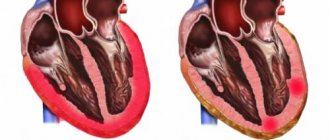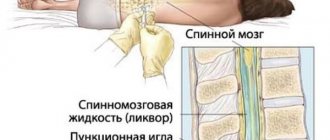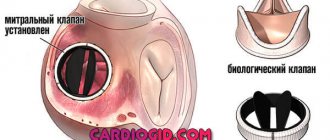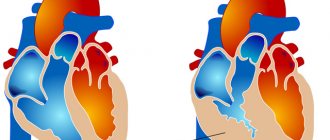The peak prevalence of leprosy occurred in the Middle Ages (12 - 16), when the majority of the population of European countries was affected by this disease. In those days, leprosy was considered an incurable disease; lepers were expelled from the city and were forced to wear a crow's foot around their necks and ring a bell, warning of their appearance.
Despite the decline in incidence, leprosy still occurs on Earth and doctors of any specialty must be alert to the diagnosis of this disease. The last case of officially registered leprosy in Russia was identified in 2015 in a migrant from Tajikistan working as a construction worker in Moscow.
Etiology and epidemiology
Mycobacterium leprae (Hansen's bacillus) is a pathogenic microorganism first isolated by the Norwegian scientist Hansen in 1874. He described a bacterium that penetrates the human body, persists in it for a long time and, after many years, causes terrible skin lesions that disfigure people. Thanks to the bacteriologist, leprosy received another name - Hansen's disease. Around the same time, doctors in other countries, in order to find out the pathogenesis of the terrible disease, were engaged in self-infection. They injected themselves with the secretions of leper ulcers, but they never got sick. In 2008, a discovery occurred in modern microbiology - the bacterium Mycobacterium lepromatosis, pathogenic for humans and some mammals, was isolated.
Mycobacteria are straight or slightly curved rods with rounded ends that do not form spores or capsules and stain positive for Gram. In the smear they are located singly or in clusters resembling balls. Bacillus Hansen is an unconditional intracellular pathogen that invades tissue macrophages and destroys them. The microbe has dermatotropism and neurotropism. The causative agent of leprosy has similar morphological, tinctorial and physiological properties with the tuberculosis bacillus, but unlike the latter, it is cultivated only in the skin of experimental animals. Mycobacterium leprae does not grow on artificial media. It cannot exist outside the human body and parasitizes only in the host cells. The bacillus develops slowly in the skin and mucous membranes - it divides once every two weeks. It is this record duration of reproduction that is responsible for the incubation of the process, which takes years.
The first clinical signs appear in patients 10-20 years after infection.
In laboratory conditions, experimental animals are infected to isolate a pure culture. Previously, these were armadillos. Currently, the mycobacterium is grown in cells of mouse footpads or in cysts of single-celled Acanthamoeba. The bacterium is resistant to treatment with alcohol, acids and some disinfectants. It dies when boiled for 15 minutes and under the influence of chlorine-containing solutions - chloramine, sulfochloranthin and bleach. Microbes are quickly destroyed in air. At the same time, the pathogen can exist in human corpses for quite a long time.
The source and reservoir of infection is a sick person. Microorganisms are found in all biological environments of the patient - blood, nasal secretions, saliva, breast milk, semen, urine, feces, skin leprosy discharge. Mycobacteria live in soil and water, maintaining their activity for eight months. In terms of epidemiology, these objects are not dangerous to humans. Natural sources of leprosy are wild armadillos and monkeys.
Ways of transmission of infection:
- contact - as a result of direct, prolonged and regular interaction with a sick person,
- airborne - inhalation of microbes released into the external environment during conversation, coughing, sneezing,
- transmissible - from the bites of insects that feed on blood.
The risk of infection is greatest during close direct contact with a sick person - through kissing, sexual intercourse, hugging, or shaking hands. First of all, members of the same family, neighbors, and sexual partners become infected. Children are most susceptible to developing pathology due to imperfect immune defense.
Historical facts
- The spread of leprosy is associated with the Crusades, when knights participating in them became infected with leprosy in conquered countries and brought the disease to Europe.
- Leprosy was stopped by the plague. During the epidemic of this disease in Europe, weakened and exhausted people, including those with leprosy, fell ill first.
- In France, the king issued a decree according to which all lepers were subjected to a “religious tribunal”, according to which they were taken to the church, where they were laid in a coffin and had a funeral service, and then taken to the cemetery and lowered into the grave. After the coffin was lowered into the grave, the words were said: “You are dead to us, not alive,” and several shovels of earth were thrown onto the coffin. Then the “dead man” was removed and sent to the leper colony. He had no right to return, and for his family and friends he was considered officially dead.
- Lepers in the Middle Ages were deprived of social rights. They were not supposed to visit churches, taverns, fairs and other public places, as well as wash in open water, drink running water, eat with healthy people, touch their things and talk to them.
- Leprosy in the Catholic Church was a legal ground for divorce, although the Catholic faith prohibits the latter.
- Other names for leprosy in the Middle Ages were: black sickness, Phoenician disease, lazy death, slow death, mournful disease. In Russia, leprosy began to be called leprosy, from the Old Russian word “kazyt”, which means to distort, disfigure.
Pathogenesis
Mycobacteria enter the human body through damaged skin or the respiratory tract. They invade epithelial cells, multiply and destroy them. By lymphogenous and hematogenous routes, microbes spread throughout the body, affecting blood vessels, peripheral nerve fibers and internal organs. In healthy people, due to the full functioning of the immune system, pathology does not develop.
The risk group includes:
- Small children,
- patients with alcoholism or drug addiction,
- persons with immunodeficiency or chronic diseases.
There are factors that play an important role in the development of leprosy:
- social status,
- economic level,
- financial resources,
- sanitary culture.
Mycobacterium leprae does not cause tissue damage for nothing. In order for the microbe to become active, additional adverse external influences are required:
- secondary bacterial infection against the background of weakened immunity of patients,
- unhealthy diet – unbalanced, low-calorie, irrational,
- contaminated drinking water that has not undergone thermal or mechanical purification,
- poor living conditions - material instability, sanitary and hygienic problems.
Due to long incubation and the presence of a latent period, the diagnosis of leprosy is delayed. Doctors experience certain difficulties when making a diagnosis. This leads to delayed treatment of the infection and a worsening prognosis for recovery.
Currently, there are various forms of leprosy:
- Lepromatous - severe and malignant skin lesions with the formation of large nodes called lepromas. As the pathology progresses, lepromas disintegrate, the nose becomes deformed, and the fingers and toes are torn off.
- Tuberculoid - asymmetrical, insensitive, red spots and plaques form on the skin, superficial nerves and internal organs are affected. This less contagious form of infection is much easier for patients to tolerate.
- Borderline - develops in one of two main types of the disease.
- Juvenile – a large number of almost invisible spots appear on the skin of children.
- Uncertain - spots appear and disappear without a trace after a few months.
Each form consists of successively changing stages of the disease - stationary, progressive, regressive, residual.
Tuberculoid leprosy
Tuberculoid leprosy usually begins with the appearance of a clearly defined hypopigmented spot, within which hyperesthesia is noted. Subsequently, the spot enlarges, its edges rise, become roll-shaped with a ring-shaped or spiral pattern. The central part of the spot undergoes atrophy and sinks. Within this lesion, the skin is devoid of sensitivity, there are no sweat glands and hair follicles. Near the spot, thickened nerves innervating the affected areas are usually palpated. Nerve damage leads to muscle atrophy; The muscles of the hand are especially affected. Contractures of the hands and feet are common. Injuries and pressure lead to infections of the hands and feet, and neurotrophic ulcers form on the soles. In the future, mutilation of the phalanges is possible. When the facial nerve is damaged, lagophthalmos and resulting keratitis occur, as well as corneal ulcers, leading to blindness.
Symptoms
Incubation is the period of the infectious process that begins with the introduction of pathogens into the body and ends with the appearance of clinical signs of the disease. Leprosy has a long incubation period. In most cases, it lasts 5-7 years, sometimes it lasts up to 20 years or is shortened to six months. The disease progresses gradually: first, superficial tissues in contact with air are affected - skin, mucous membranes, peripheral nerve fibers, and then deep-lying structures of the skin. This leads to external deformities and distortion of the usual human appearance. In the absence of timely and adequate treatment, blood supply is disrupted in the parts of the body most distant from the heart - the fingers and toes. As a result of the addition of a secondary bacterial infection, tissue necrosis occurs, leading to the death of the fingers on the extremities.
General symptoms of leprosy that occur in any form of the process:
- low-grade fever,
- weakness,
- cephalgia,
- spots on the skin,
- paresthesia,
- joint pain that limits mobility,
- facial deformation,
- damage to the nasal mucosa.
Tuberculoid form
The disease has a benign course, relatively low contagiousness and is manifested by signs of inflammation of the skin, superficial nerves, and in advanced cases, internal organs.
Symptoms of pathology:
- erythema on the skin - flat red spots covered with white scales with clear boundaries, a tendency to grow and merge,
- the appearance along the edge of erythematous rashes of small dark red or bluish papules, which over time form large convex plaques with atrophy in the center - figured tuberculoids of an asymmetrical arrangement,
- loss of all types of skin sensitivity in the affected area due to thickening and compaction of nerve fibers,
- brittleness and destruction of nails, loss of natural color, formation of stripes and grooves, layering,
- hair loss near skin defects, changes in the color of the dermis, dysfunction of the sweat and sebaceous glands,
- dry skin, appearance of rough areas, development of hyperkeratosis,
- in case of damage to large nerve trunks - destruction of the osteoarticular apparatus with limited mobility of the fingers, the development of “claw-shaped hand” and “seal foot” contractures, the appearance of trophic ulcers on the legs, muscle atrophy,
- inflammation of the facial nerve - impaired facial expressions, a mask on the face, incomplete closure of the eyelids,
- corneal ulcer leading to blindness,
- mutilations - rejection of fingers, hands and nose.
Lepromatous form
The disease has a severe course and unfavorable prognosis. In patients, the skin, mucous membrane of the respiratory and oral cavity, peripheral nerves, and internal organs are affected. Periods of exacerbation and remission periodically replace each other. During lepromatous reactions, lepromas enlarge and ulcerate, new elements appear, body temperature rises, and lymphadenitis develops.
The pathognomonic sign of leprosy is the “lion's face” - the special appearance of the patient. Numerous nodules or plaques, called lepromas, appear on his face and have a characteristic scaly structure. Mycobacteria multiply rapidly in the skin, which becomes thick and wrinkled over time.
Clinical signs of infection:
- Symmetrical erythromatous spots without clear boundaries appear on the skin of the face, palms, legs, and buttocks, on which a huge number of bacteria are concentrated. At first they are smooth, shiny, red, and as they develop they become rusty-brown. Extensive lesions have been present on the patient’s body for years, sometimes disappear or turn into lepromatous infiltrates - papules or plaques. In infiltrative foci, lepromas are formed - granulomas in the form of tubercles or nodes located in the dermis or under it. They grow up to 3 cm, do not hurt, and peel off. Over time, the elements soften or harden, sometimes dissolving on their own, leaving behind a depigmented, sunken spot. In severe cases, lepromas ulcerate, become very painful, and then scar.
- Skin dysfunction - increased sebum production, dyshidrosis, damage to hair follicles. The skin takes on the appearance of an orange peel. The patient's outer third of the eyebrows fall out, and the mustache and beard thin out.
- “Lion face” is a lesion of the face with the appearance of infiltrates, deep folds and wrinkles, thickening of the cheeks and earlobes, protruding brow ridges, deformation of the nose, and lobulated lips.
- Damage to the mucous membrane of the nasal and oral cavity, red border of the lips and tongue. Patients often have repeated nosebleeds, nasal breathing worsens, the sense of smell is impaired, the organ is deformed, its septum is perforated, the dorsum sinks, and a saddle-shaped nose is formed. When the larynx becomes inflamed, laryngitis develops, the glottis narrows, and the ability to speak is lost.
- Changes in the visual analyzer - inflammation of the cornea, iris, conjunctiva, eyelids, clouding of the lens, increased sensitivity to light, blurred vision.
- Damage to lymph nodes, nerve fibers, blood vessels, testes, liver, kidneys, urethra.
- Development of paralysis and paresis, complete loss of skin sensitivity, formation of trophic ulcers.
- Hormonal imbalance is manifested by gynecomastia, infantilism, and sexual dysfunction.
The lepromatous type leads to leprosy cachexia or death.
Undifferentiated and borderline forms
The disease is manifested by signs of inflammation of nerve fibers, the appearance of dispigmented areas on the skin and long-term non-healing ulcers, hypoesthesia in the affected area, and dysfunction of the skin glands. Patients experience polyneuritis, paralysis and paresis, deformities of the arms and legs.
The borderline form is the formation on the skin of the legs of asymmetrical pigment spots, individual nodes or protruding red plaques, reminiscent of injection marks. Skin manifestations are combined with neurological signs of asymmetric polyneuritis. The general well-being of the patients is not affected. As the disease progresses, it transforms into a lepromatous or tuberculoid form. Trophic disorders and sensitivity disorders become more pronounced.
Symptoms, diagnosis of leprosy (leprosy)
The disease has a long incubation period, which can last from six months to several decades, more often 5-7 years. It is asymptomatic. A long latent period is also possible, manifested mainly in general malaise, causeless weakness, chilliness, etc.
There are two polar forms (types) of leprosy - lepromatous and tuberculoid, as well as four stages of the disease: progressive, stationary, regressive and the stage of residual effects. In addition, intermediate or dimorphic leprosy is possible.
Diagnostic process
Leprosy has characteristic clinical signs, so diagnosing the disease does not cause any difficulties for doctors. Patients with long-term non-healing elements of the rash - erythema, pigmentation, infiltrates, tubercles, nodules, as well as numbness of the skin, thickening of nerve fibers - deserve special attention. Anamnestic data are important - being in an endemic area, contacts with leprosy patients. The diagnosis becomes obvious if the patient has no eyebrows and fingers, there are lepromas on the body, paralysis of the limbs, a deformed nose, and a “lion face.” This is how the late stage of infection manifests itself.
In the early stages of the process, clinical signs are blurred and atypical. Diagnosis is based on laboratory data:
- Bacterioscopic detection of the Mycobacterium leprae bacillus in scrapings from the fingers, earlobes, and nasal mucosa - staining a fixed smear according to Ziehl-Neelsen and studying it under a microscope.
- Histological analysis of lepromas, lymph node contents or ulcers.
- PCR - detection of mycobacterial DNA in the discharge of the nasopharynx or affected areas of the skin.
- Determination of the degree of loss of skin sensitivity - functional tests with Minora reagent, nicotinic acid, histamine.
- Lepromin test is an allergic test, which is an intradermal injection of lepromin, the result of which is taken into account after 2-4 weeks. Patients are injected with the causative agent of leprosy, after which the local immune response is assessed. This technique allows you to differentiate different forms of leprosy.
- Serodiagnosis is the determination of microbial antigens in the patient’s blood.
The doctor evaluates the results of a comprehensive examination of the patient as a whole. Based on the data obtained, he makes a final diagnosis and prescribes specific therapy.
Undifferentiated type of leprosy
The undifferentiated (borderline) type of leprosy develops when the patient has not yet developed a type of immunological activity. With a favorable course, the tuberculoid type of leprosy subsequently develops; with a low degree of immunological reactivity, the lepromatous type of leprosy develops. The lepromine reaction, depending on the direction of the pathological process, can be negative or positive. The undifferentiated (borderline) type of leprosy combines the clinical manifestations of 2 main types of the disease, but with a milder course.
Treatment process
Leprosy is currently well treated with specific anti-leprosy drugs. Patients with severe skin defects, positive bacterioscopy results, and relapse of a severe infection are hospitalized in the hospital. The remaining patients receive therapeutic care at home.
Etiotropic therapy with drugs active against Mycobacterium leprosy stops the development of the infectious process and strengthens the patient’s body.
- Sulfones - “Solusulfone”, “Sulfametrol”, “Dimotsiphon”, “Dapsone”.
- An antileprozoal drug that inhibits the growth of mycobacterium leprosy - “Clofazimine”.
- Antibiotics - Rifampicin, Ofloxacin, Ethionamide, Minocycline, Clarithromycin.
Patients are prescribed a combination of one sulfone drug and two antibiotics. The duration of treatment is 6 months, and in the absence of side effects, the therapeutic course is extended to 3 years. Medicines are changed annually to prevent bacteria from developing antibiotic resistance. Seriously ill people take the drugs for the rest of their lives.
Immunocorrective and immunostimulating treatment is aimed at activating the immune function - Methyluracil, autohemotransfusion, Pyrogenal, gamma globulin. Hepatoprotectors – “Essentiale Forte”, “Phosphogliv”, “Karsil”, adaptogens and vitamin-mineral complexes allow the body to recover faster after a serious illness.
To cope with paralysis, paresis and contractures, patients are prescribed physiotherapeutic procedures:
- massage,
- electrophoresis,
- UHF,
- exercise therapy,
- wearing a special aid.
In some cases, patients require surgical intervention, psychiatrist assistance aimed at overcoming leprophobia in society, as well as professional retraining with subsequent employment.
Medicines
Photo: evidentlycochrane.net
In the 1940s, dapsone was discovered, which belongs to the sulfones (dapsone, solusulfone). They are the main drugs for the treatment of leprosy. Over the course of 20 years, M. leprae has developed resistance to the only known drug to treat leprosy. Rifampicin and clofazimine were discovered in the 1960s. These drugs were included in the treatment regimen of CLT - combination drug therapy.
Since 1995, WHO has committed to providing combination drug therapy (DCT) treatment free of charge to all leprosy patients in the world. At the moment, WHO has signed an agreement with the pharmaceutical company only until 2021. Over the past 20 years, CRT has been provided to more than 16 million patients.
Prognosis and prevention
Mild forms of the disease, with early detection and adequate therapy, result in complete cure of patients. In severe cases, if treatment is delayed, leprosy leads to the development of complications and often ends in disability of patients.
Negative consequences of leprosy:
- ulcerative defects on the legs,
- complete loss of vision,
- aphonia,
- skeletal deformation,
- finger rejection,
- movement disorders,
- infertility in men.
The cause of death of patients is exhaustion, suffocation, amyloidosis. If treatment measures were taken on time, the patient can save life.
Specific prevention of leprosy has not been developed. Measures to prevent infection and the development of pathology:
- strengthening the immune system,
- avoiding contact with infected people,
- maintaining personal hygiene rules,
- timely identification of sources of infection,
- isolation of patients,
- early initiation of specific treatment,
- rehabilitation of patients receiving anti-leprosy therapy,
- dispensary observation of contact persons,
- improving sanitary conditions and improving the quality of life,
- sanitary education work among the population.
Answers to popular questions
- What is the prognosis for leprosy?
If a person begins to receive treatment at an early stage of the disease, the prognosis is favorable. When leprosy is in an advanced form, there is a high probability that the patient will become disabled.
- Are there leper colonies in Russia?
Yes, in Russia there are 4 leper colonies, which are located in Astrakhan, Krasnodar Territory, Stavropol Territory and Sergiev Posad. Sick people in leper colonies have their own houses and run their households. Doctors live next to the leper colony.
- After recovery, are already formed deformities reversible?
No, if a person has lost his hands or fingers, they will not grow back. Treatment is aimed at eliminating leprosy bacteria in the body. To cope with paralysis, paresis and contractures, the patient is recommended physiotherapy, exercise therapy, and sometimes surgery is performed.
- What are the complications of leprosy?
The main complications include: trophic ulcers, damage to the organs of vision with the development of complete blindness, loss of voice, deformation of the nose, loss of fingers, paralysis. If there is no therapy, the person dies from cachexia, asphyxia or amyloidosis.
- Is it possible to get vaccinated against leprosy? What are the measures to prevent the disease?
There is no vaccine for leprosy. There is evidence that BCG placement significantly reduces the likelihood of infection with Mycobacterium leprosy. To prevent infection, you need to support your immune system and also avoid contact with sick people. If a person with leprosy lives in a family, then he should have his own personal belongings, from a comb to dishes. All family members should be regularly examined for detection of Mycobacterium leprosy in their body, and also carefully observe the rules of personal hygiene.
Forecast
The overall prognosis will be better if a doctor diagnoses leprosy before it gets worse. Early treatment prevents further tissue damage, stops the spread of the disease, and prevents serious health complications.
The outlook tends to worsen when the diagnosis is made at a later stage, after the person has significant disfigurement or disability. However, proper treatment is still necessary to prevent further damage to the body and prevent the disease from spreading to others.
Despite the success of antibiotics, ongoing medical complications may occur, but doctors will work to provide proper care and help manage any residual conditions.










